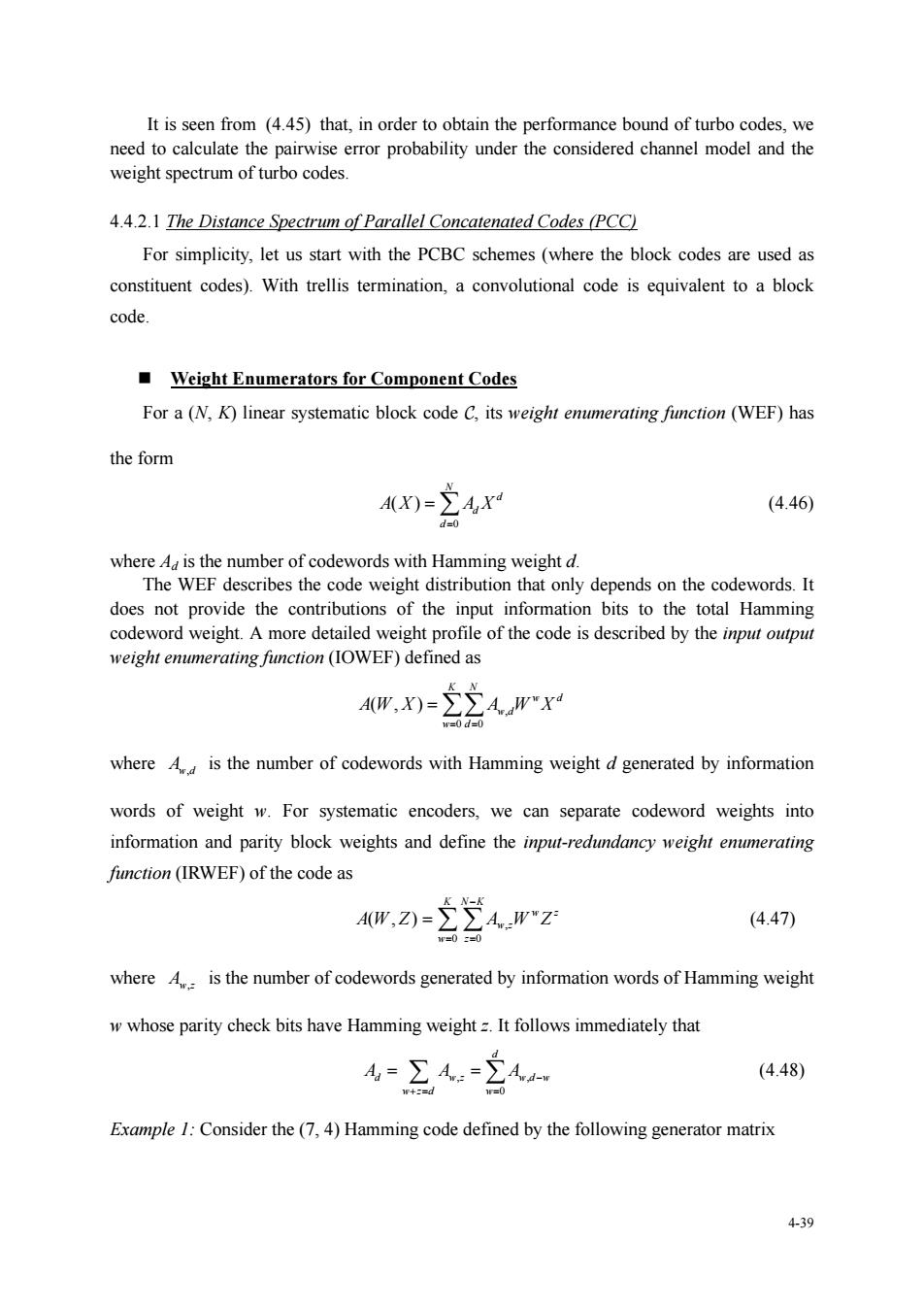正在加载图片...

It is seen from (4.45)that,in order to obtain the performance bound of turbo codes,we need to calculate the pairwise error probability under the considered channel model and the weight spectrum of turbo codes 4.4.2.1 The Distance Spectrum of Parallel Concatenated Codes (PCC) For simplicity,let us start with the PCBC schemes (where the block codes are used as constituent codes).With trellis termination,a convolutional code is equivalent to a block code Weight Enumerators for Component Codes For a (N.K)linear systematic block code C,its weight enmerating function (WEF)has the form AX)=∑Axd (4.46) d=0 e w where umber of code words with Hamr ning we eightd distribution that only depends on the codewords.It does not provide the contributions of the input information bits to the total Hamming codeword weight.A more detailed weight profile of the code is described by the input output weight emumerating function (IOWEF)defined as 4WW.x)-x =00 where is the number of codewords with Hamming weight d generated by information words of weight w.For systematic encoders,we can separate codeword weights into information and parity block weights and define the input-redundancy weight emmerating function(IRWEF)of the code as 4m,)=2岁 (4.47) where A.is the number of codewords generated by information words of Hamming weight wwhose parity check bits have Hamming weight=.It follows immediately that (4.48) Example I:Consider the (7,4)Hamming code defined by the following generator matrix 430 4-39 It is seen from (4.45) that, in order to obtain the performance bound of turbo codes, we need to calculate the pairwise error probability under the considered channel model and the weight spectrum of turbo codes. 4.4.2.1 The Distance Spectrum of Parallel Concatenated Codes (PCC) For simplicity, let us start with the PCBC schemes (where the block codes are used as constituent codes). With trellis termination, a convolutional code is equivalent to a block code. Weight Enumerators for Component Codes For a (N, K) linear systematic block code , its weight enumerating function (WEF) has the form 0 ( ) N d d d AX AX (4.46) where Ad is the number of codewords with Hamming weight d. The WEF describes the code weight distribution that only depends on the codewords. It does not provide the contributions of the input information bits to the total Hamming codeword weight. A more detailed weight profile of the code is described by the input output weight enumerating function (IOWEF) defined as , 0 0 (,) K N w d w d w d AW X A W X where Aw d, is the number of codewords with Hamming weight d generated by information words of weight w. For systematic encoders, we can separate codeword weights into information and parity block weights and define the input-redundancy weight enumerating function (IRWEF) of the code as K w N K z w z A W Z Aw z W Z 0 0 , ( (4.47) , ) where Aw,z is the number of codewords generated by information words of Hamming weight w whose parity check bits have Hamming weight z. It follows immediately that , , 0 d d wz wd w wzd w A AA (4.48) Example 1: Consider the (7, 4) Hamming code defined by the following generator matrix